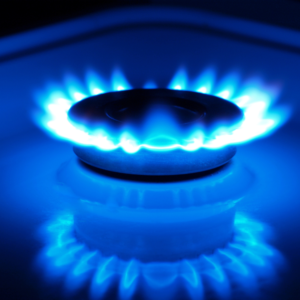A national debt that just crested $23 trillion, the highest suicide rate in at least half a century, a self-inflicted trade war, the cowardice of Cancel Culture — there’s plenty to be unthankful for in November 2019.
The cost to heat your home over the next several months isn’t one of them.
The U.S. Energy Information Administration’s data-compilers have announced that the “amount of natural gas held in storage in 2019 went from a relatively low value of 1,155 billion cubic feet (Bcf) at the beginning of April to 3,724 Bcf at the end of October because of near-record injection activity during the … injection, or refill, season (April 1–October 31).”
Natural gas heats 49 percent of American domiciles, and the fuel generates a plurality of electricity, which is used to warm 34 percent of U.S. homes. Having a lot of the stuff squirreled away as temperatures begin to drop is good news for a nation limping toward what promises to be a thoroughly miserable 2020.
According to the conventional wisdom of the not-too-distant past, ample (and thus, affordable) natural gas simply can’t be a thing as we prepare to enter the third decade of the 21st century. It wasn’t too long ago that production was dipping and prices were rising. In the cover story for the July 2, 2003, edition of Time magazine, Donald L. Barlett and James B. Steele, two liberal activists who claim to be an “investigative reporting team,” tut-tutted about a “potentially chronic natural gas shortage.” They approvingly quoted Alan Greenspan: “We are not apt to return to earlier periods of relative abundance and low prices anytime soon.”
A few years later, Time returned to the scaremongering — it noted “the big crunch” in natural gas, and summarized the thoughts of “experts,” who “say we could cut … prices by 20% in the next five years if the U.S. would, for instance, mandate efficiency targets for power plants and offer more financial incentives for renewable fuels like wind and solar.”
The narrative matched the prejudices of elites in media and government, who have long despised extractive industries. But the Great Natural Gas Crisis was not to be. In the late 1990s, Mitchell Energy and Development had tinkered enough with the hydraulic-fracturing process to develop a method to tap vast reservoirs of hydrocarbons trapped in once-unprofitable formations. The “shortage” became a surplus, and prices behaved accordingly.
While fracking’s role in sending petroleum production skyrocketing grabs the bulk of the attention, it’s the associated surfeit of natural gas that is likelier to have a bigger impact in the decades — centuries? — to come. Pollution, state and regional economies, the manufacturing sector, international trade, and foreign policy are each undergoing transformations, even though the natural-gas boom is still in its crib.
Between 2001 and 2005, marketed production of U.S. natural gas, stagnant since the mid-1970s, fell by 8 percent. But then fracking began to enjoy widespread adoption. Between 2005 and 2018, production soared by 73 percent. The usual suspects — Oklahoma, Texas, Louisiana, Colorado — boosted their numbers. But several underachievers joined the starting lineup. West Virginia’s production ballooned by a factor of 8. North Dakota, 13. Ohio, 29. And Pennsylvania, the heart of the Marcellus Shale Formation, increased by nearly 37 times.
Yes, environmentalists have waged a war on coal, but as cruel and hysterical as their crusade has been, the availability of cheap natural gas has played a larger role in the fuel’s ascendency as the ingredient of choice for power plants. And making the switch has substantially cleaned the skies. Compared to coal, natural gas’ emissions of mercury, particulate matter, sulfur dioxide, nitrogen oxides and carbon monoxide range from impressively to ludicrously small.
With air-quality benefits that strong, it’s no wonder that the world wants U.S. natural gas. And we’re beginning to sell it. Five facilities — one in Texas, one in Georgia, one in Maryland, and two in Louisiana — currently export liquified natural gas. Customers include Taiwan, Jordan, China, Argentina, India, Chile, Turkey, Brazil, and the United Kingdom. And 13 proposals are either pending or pre-filed with the Federal Energy Regulatory Commission for new export terminals. The International Energy Agency predicts that by 2024, America will be the top liquified natural gas vendor on earth.
So this winter, ditch the sweaters. Crank the thermostat. You’ve got nothing to be ashamed of, and every reason to be as warm as you want to be. There’s enough natural gas for everyone — here and abroad. Probably, forever.

